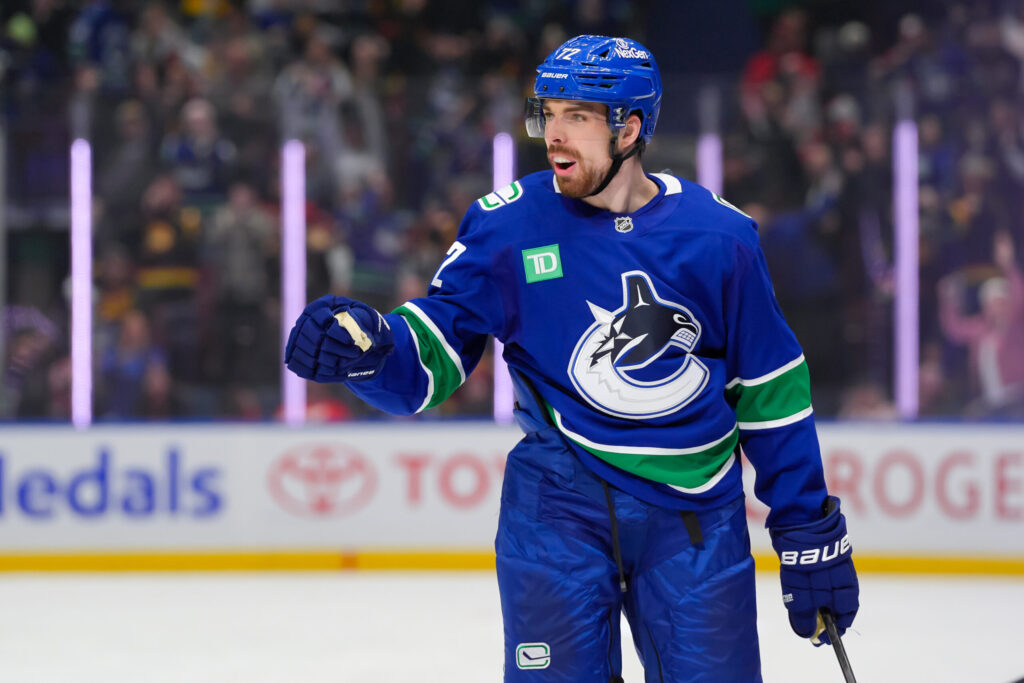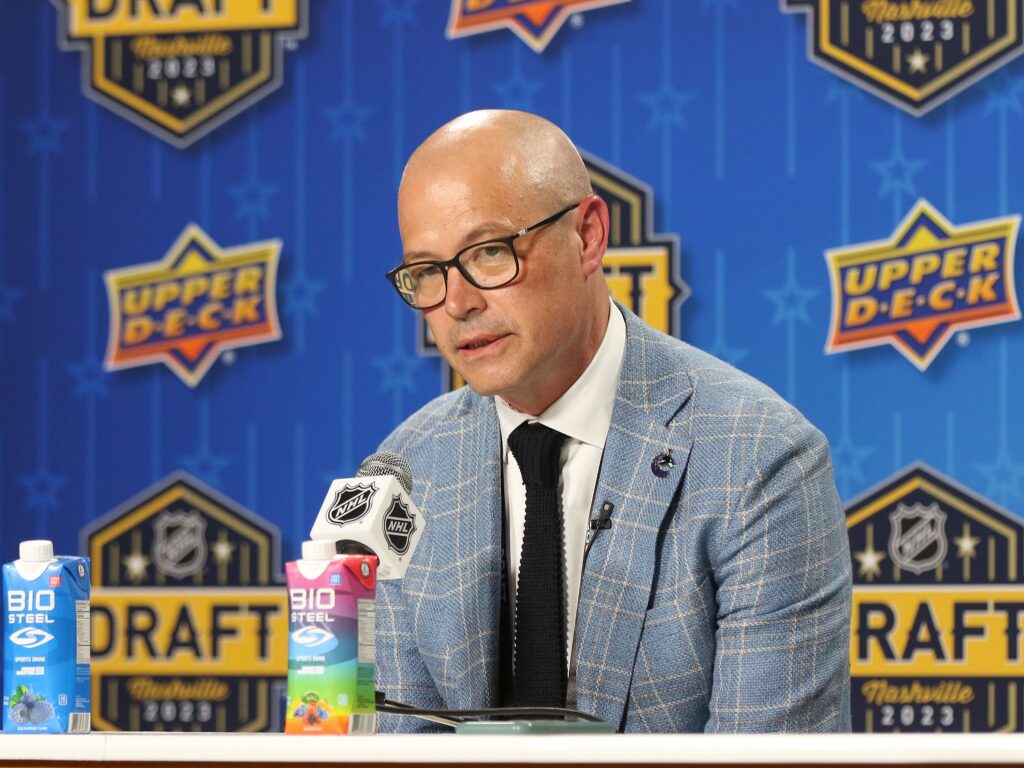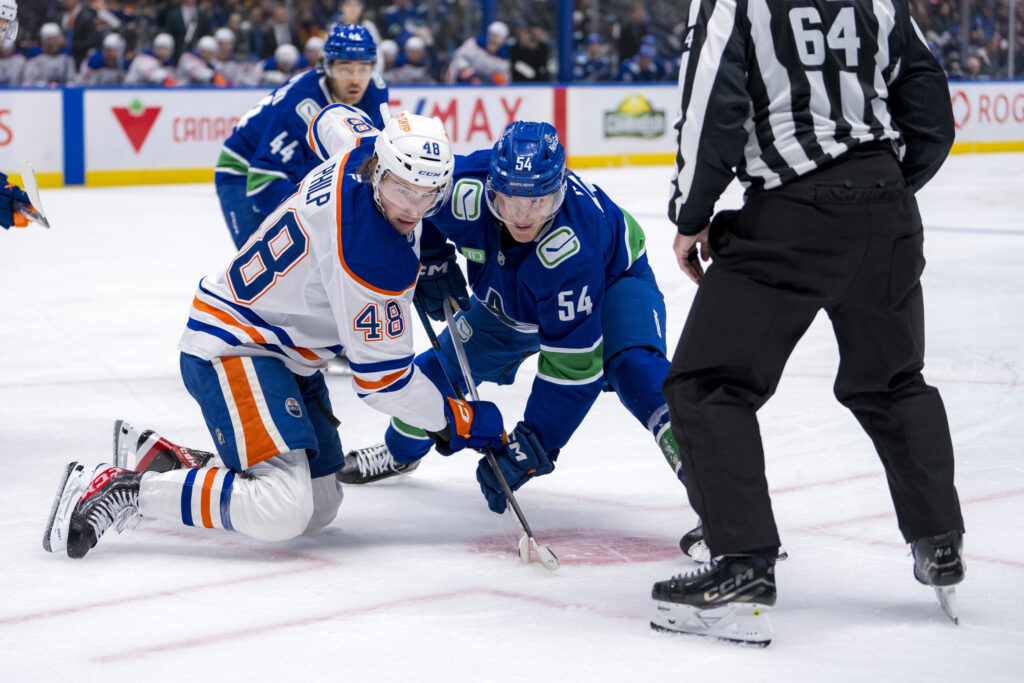A single hit can change the trajectory of a season. For the Vancouver Canucks, the collision between Filip Chytil and Tom Wilson has done just that, transforming a known positional weakness into an urgent structural crisis. Chytil, injured during the game against Washington, was promptly placed on injured reserve and flown back to Vancouver for further evaluation. The “upper-body” designation does little to mask the concern, especially given Chytil’s documented concussion history.
The Canucks’ management team, led by Patrik Allvin, now finds itself in an unenviable position. The organization’s centre depth was already its Achilles’ heel heading into the season. Chytil’s absence, which threatens to be significant, has torn a hole in the lineup that internal options simply cannot patch. The question is no longer if the Canucks need to acquire help, but what price they are willing to pay—in assets and in expectations—to stay competitive.
Also on the EDGE – Canucks Under Siege: Injuries & Cap Gymnastics Force Roster Shuffle
The Immediate Domino Effect
The fragility of Vancouver’s lineup down the middle was exposed almost immediately. With Chytil out and Teddy Blueger also doubtful, the Canucks were staring at a skeletal centre corps of Elias Pettersson, Aatu Räty, Max Sasson, and Nils Aman. This is not a group capable of sustaining a top-nine workload in the NHL.

The loss pushes players into roles they are not ready for. It forces the coaching staff to stretch minutes, tax their top performers, and hope for the best from the periphery of their roster. This is a strategy that rarely, if ever, leads to sustained success. The team is already finding it difficult to rely on internal solutions; players like Räty and Aman are being asked to absorb minutes that were meant for established NHLers.
This situation puts immense pressure on the rest of the roster at the very start of the season. The team lacks eligible, full-time centreman in the organization for an immediate, impactful recall, forcing Allvin’s hand.
An Altered View from the Front Office
Allvin has publicly acknowledged the new reality. He admitted that while the club has been searching for a top-six skill player all summer, Chytil’s injury compels him to “take a different view” of the market. The search must now balance short-term necessity with long-term strategy.
Analysts, however, are urging for immediate, decisive action. Thomas Drance, among others, has argued that the Canucks must acquire a credible NHL-level centre option, even if it means paying a “significant retail price.” The argument is that inaction is its own cost. Allowing the season to spiral due to a lack of depth is a waste of a “win-now” window.
This school of thought suggests the Canucks should be willing to part with significant assets to stabilize the lineup. That could mean a high-end prospect (in the “Victor Mancini-calibre” range), multiple second-round picks, or even a heavily protected first-round pick. The message is clear: the cost of a trade is high, but the cost of waiting could be higher.
The Assets and The Roadblock
Herein lies the central conflict for the Canucks’ front office. Acquiring a top-six, or even a reliable top-nine, centre is one of the most expensive transactions in the league. Teams do not give up quality pivots for spare parts. This market reality is colliding with Vancouver’s own asset management strategy.

According to insiders, the Canucks have drawn a firm line in the sand: they are reportedly unwilling to move their 2026 first-round pick.
This stance is understandable. That pick represents a key piece of their future. However, holding it back severely limits Allvin’s flexibility in a shallow trade market. If the premium asset is off the table, the Canucks are automatically removed from the bidding for any high-impact, “needle-moving” players.
There is a financial component as well. If Chytil’s injury is severe enough to warrant a move to Long-Term Injured Reserve (LTIR), the Canucks would gain approximately $4.4 million in effective spending space. While helpful, finding a high-quality centre available for trade who also fits under that $5 million AAV ceiling is exceptionally difficult. The Venn diagram of “available,” “effective,” and “affordable” is perilously small.
The Stopgap Scenario
If Allvin maintains his stance on the 2026 first-rounder, the organization must pivot from hunting a “needle-mover” to acquiring a “stopgap.” The goal changes from “winning” the trade to simply “surviving” the injury.
Two primary pathways emerge in this scenario:
1. The Veteran Trade: One specific pitch involves veteran centre Kevin Hayes from the Pittsburgh Penguins. Hayes has seen his role diminish in Pittsburgh and could be available. A proposed deal—a 2026 fourth-round pick and defender Guillaume Brisebois—is palatable.
Hayes is not the dynamic 2C the team covets, but he is a competent, experienced NHLer. He could reasonably slot into the 2C or 3C role, provide an insurance policy, and ensure that younger players like Räty and Aman are not overwhelmed. When Chytil returns, Hayes possesses the flexibility to slide down the lineup. This move wouldn’t win headlines, but it would stabilize the depth chart.
2. Pilfering the Periphery: The waiver wire is an option, but a risky one. Few quality centres are ever waived, and the Canucks are not high enough on the priority list to guarantee they get their man.
A more viable, and proactive, strategy is to “pilfer” a player from the periphery of another team’s lineup. This involves identifying a player on another roster’s bubble—perhaps a 13th forward or top AHL call-up—and acquiring them for a low- or mid-round draft pick. In effect, the Canucks would be using a late-round asset to “jump the waiver line” and secure a depth player they’ve targeted, rather than waiting for one to be offered for free.
Allvin is now at a crossroads. The Chytil injury has forced a decision between the present and the future. He can either hold firm on his high-value future assets and patch the lineup with a stopgap solution like Hayes, or he can meet the “significant retail price” that analysts believe is necessary to keep the season on track. His next move will tell us everything we need to know about the organization’s true priorities.
Created with the aid of Gemini AI
